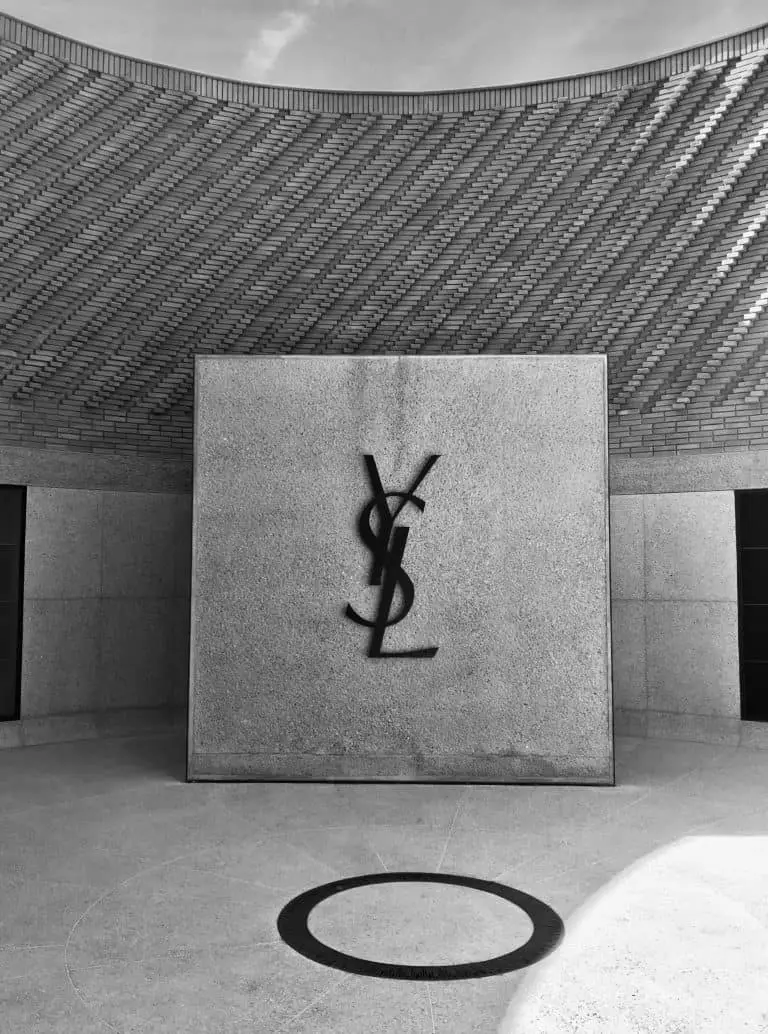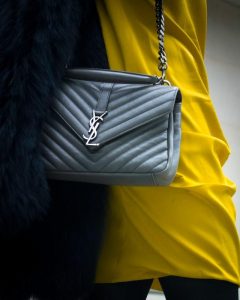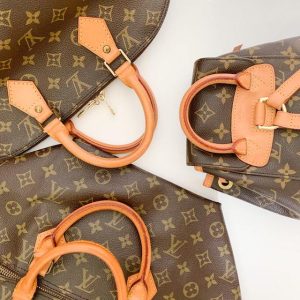France’s YSL, also known as Yves Saint Laurent SAS, is a luxury fashion house founded in 1962 by Yves and Pierre Bergé. Saint Laurent sells ready-to-wear, leather goods, shoes, and jewelry for both men and women. Yves Saint Laurent Beauté sells beauty and fragrance products. However, L’Oréal holds exclusive rights to this name and owns this beauty market and brand. This post goes over every detail of YSL history.
Yves Saint Laurent History
Michel de Brunhoff, a well-known French writer and illustrator, published Yves Saint Laurent’s sketches and launched the latter’s career by introducing him to Christian Dior. He started as Dior’s design assistant and was promoted to Creative Director when the company’s founder died unexpectedly in 1957. When Saint Laurent debuted his first couture collection in 1961 with a peacoat and wide-leg trouser combo, he did so with a wealth of experience from his work at Dior. That includes the archives of both ready-to-wear and haute couture collections. The Saint Laurent Rive Gauche ready-to-wear line did not debut until 1966. This section details YSL history, from when the founder was born to how he started and left Yves Saint Laurent and where the fashion label is.
Born and Raised in Algeria, Africa
In 1936, Lucienne and Charles Mathieu-Saint-Laurent had a son named Yves Henri Donat Mathieu-Saint-Laurent. He was born in Oran, Algeria, a port city under French rule at the time. Aside from his older sister Michèle, Yves Saint Laurent also shared a Mediterranean villa with her two older sisters. After being bullied by his classmates at his parish church as a shy and reserved schoolboy, Saint Laurent turned to design for solace. At an early age, he would fashion paper dolls’ outfits from the remnants of his mother’s clothing and perform these fashion shows for his family and friends. He’d even go so far as to design ornate invitations for the people he wanted to attend. With age, Saint Laurent’s designs shifted from paper dolls to garments for his family, including his mother and two sisters. This city’s designer recalled it as a multicultural melting pot full of traders from all over, especially from elsewhere in North Africa, even as Algeria was on the verge of violent independence conflict. The Chambre Syndicale de la Haute Couture, where he would eventually enroll at the age of 17, would be his first stop in Paris.
Joins Dior
Michel de Brunhoff, then-editor-in-chief of French Vogue, first noticed Yves Saint Laurent’s drawings in 1953. Christian Dior was impressed enough by Brunhoff’s sketches to hire him as an assistant in 1955. Dior succumbed to a heart attack in 1957, and Saint Laurent, then just 21, was named creative director of the highly esteemed fashion house in his place. Spring 1958 Trapeze, his debut collection, nearly saved the company’s financial abyss. When the Algerian War of Independence broke out in 1960, Saint Laurent was conscripted into the French Army and served for two years. When the designer was finally admitted to a military hospital after 20 days of abuse by his fellow soldiers, he learned he had been fired as Dior’s creative director. When the designer left the hospital, he sued Dior for breaking their contract and won. After that, Laurent and Pierre Bergé, his longtime business partner, launched their fashion label.
Revolutionalized Women’s Fashion
Because of his fearless approach to blending male and female fashion and his unmatched celebration of female sexuality, Saint Laurent was distinct from his contemporaries. To create a new kind of women’s clothing, he repurposed masculine items like the safari jacket and the power suit, transforming them into fashion-forward pieces that empower their wearers. The fashion industry underwent a major shift during this period. Even though he wishes he had invented denim, the designer has had far-reaching effects on how women dress. Saint Laurent created the iconic “Le Smoking” tuxedo suit for women in the 1960s, a time when wearing anything but a dress was considered taboo for women. It’s hard to overstate Yves Saint Laurent’s influence on fashion with his sharply tailored black tuxedo, Le Smoking. This was a groundbreaking addition to his haute couture collection from 1966, and it debuted on the runway in Paris to various reactions. The buyers of fashion didn’t stock it in their stores. However, influential people in the entertainment industry like Catherine Deneuve, Bianca Jagger, and Nan Kempner were the first to wear it. It was in 1975 when fashion photographer and visual artist Helmut Newton secured the look’s now-iconic status by shooting it for French Vogue on a low-light cobbled street in Paris. The designer spoke of his desire to serve women during his final haute couture show in early 2002. He aspired to join the women’s liberation movement of the last century. Le Smoking was the first of a long line of timeless designs, including safari jackets, color-block Mondrian dresses, and the “chubby” from Monsieur Saint Laurent’s 1971 couture Scandal collection or as it is famously known as, Libération/Quarante.
Gucci Group Buys Yves Saint Lauren
Alber Elbaz assumed responsibility for the ready-to-wear line after Yves Saint Laurent handed it over to him in 1998 so he could concentrate on the couture collection. Elbaz is known for making the following statement backstage at his debut show: “I don’t want to do Alber Elbaz for Yves Saint Laurent.” Instead, he said he was interested in working with” Saint Laurent by Alber Elbaz.” It’s possible that his attitude contributed to the relatively short length of his stint. After working for the label for only three seasons, he was fired and went to work for Lanvin, where he stayed until 2015. Tom Ford, who was also leading the Italian label Gucci then, succeeded Elbaz as creative director of Yves Saint Laurent shortly after the Gucci Group purchased the House of Yves Saint Laurent. Ford’s arrival signaled a shift in the brand’s tone. His first collection featured monochromatic outfits without any of Saint Laurent’s trademark accessories to make an impression. Despite critical acclaim and skyrocketing sales, the relationship between Ford and Saint Laurent was tense. Ford claimed that Saint Laurent disapproved of his vision for the brand.
Saint Laurent Retires to Marrakech
Saint Laurent left the YSL label in 2002 and went to Marrakech with his health and drug problems at an all-time high. It was emotional when he took the bow at his final show, a nostalgic step back, and looked at his 40-year career. Yves Saint Laurent Rive Gauche became the sole focus of the fashion house’s ready-to-wear division following the closure of the couture division. Tom Ford had worked tirelessly between 1999 and 2004 for both Gucci and Yves Saint Laurent. And so, it was no surprise when he decided to combine his efforts and launch his brand. In the role of creative director, Stefano Pilati, a former Miu Miu designer, took the helm. Since then, Saint Laurent has become known for its sharp tailoring and minimal details. However, his first collection in spring/summer 2005 featured a feminine silhouette that was new but instead felt off-track for Saint Laurent.
Hedi Slimane Replaces Tom Ford
In 2012, Hedi Slimane took over from Tom Ford. Slimane transformed YSL like no other successor of Saint Laurent; he is one of the most significant players in YSL history. This drastic name change, which took place over four years, clearly caused quite a stir. Even though Slimane had worked for the house before, his appointment caused a lot of controversies, especially when it was confirmed that the ready-to-wear line would now be called Saint Laurent. But the Yves Saint Laurent name and YSL logo are still on accessories like handbags and shoes, as well as cosmetics made by L’Oréal under a license. Also, it was said that the design studio would move to Slimane’s adopted home of Los Angeles, California, while the couture atelier would stay in France. Slimane may have chosen a quiet life in LA to avoid press exposure and the media storm against Saint Laurent Paris.
The Saint Laurent ‘look,’ which can be found in both the men’s and women’s collections, is rooted in this vision. There are metallic party dresses that harken back to 1970s and 1980s edgy glamour and exquisitely tailored leather motorcycle jackets and rock-inspired boots. The Kate Moss heroin chic era evoked Slimane’s approach to red carpet events, with models resembling heroin addicts, music recorded for the occasion, and a fusion of men’s and women’s collections. Iconic pieces are elevated to luxurious status in a wholly defiant but cool way, and the label now embodies the youth culture. In 2015, Hedi Slimane announced that the couture line would be relaunched. He had been working on this project since he was appointed creative director in 2012. The current creative director is now Anthony Vaccarello, who is working for Saint Laurent, providing a new perspective on how to drive the label forward.
Closing Thoughts
A revolutionary new approach to women’s clothing design was pioneered by Yves Saint Laurent when he founded his own fashion house in 1961. His unconventional approach rocked the fashion industry to sexism and shaped YSL history. He was inspired by the structure of menswear and the feeling of power that it gave him. Alber Elbaz, Hedi Slimane, and Anthony Vaccarello are notable designers who have interpreted Yves Saint Laurent’s vision for the brand since then. A. M. Cassandre created the current logos in 1963. That demonstrates how the fashion label has stayed true to its roots. Following the departure of Yves Saint Laurent, the majority of the company’s successes can be attributed to fashion designer guru and Creative Director Hedi Slimane. In 2015, he revived the brand’s haute couture collection, for which the company is best known today. May the founder, Yves Saint Laurent, who passed on 2008 in Paris, France, rest in peace.








